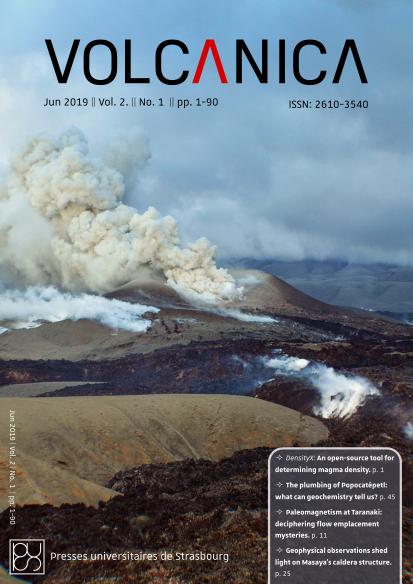Halogen (Cl, F) release during explosive, effusive, and intrusive phases of the 2011 rhyolitic eruption at Cordón Caulle volcano (Chile)
Main Article Content
Abstract
We investigate sulphur, chlorine and fluorine release during explosive, effusive and intrusive phases of the 2011 Cordón Caulle eruption, with a focus on halogen devolatilization. Petrological analysis shows halogen release to have been promoted by isobaric crystallization in slowly-cooled magma that was emplaced in a lava flow and sub-vent intrusion. Fluorine in particular mobilized only after extensive groundmass crystallization and incipient devitrification. By 2017, the gas emitted from vent-proximal fumaroles had hydrothermal compositions, with HCl/HF ratios decreasing with decreasing temperature. We estimate that the eruption could eventually emit up to 0.84 Mt of SO2, 6.3 Mt of HCl, and 1.9 Mt of HF, but only ~7% and ~2% of total HCl and HF were emitted during explosive phases, and significant halogens are yet to be released from the intrusion. Halogen devolatilization and its associated hazards can persist long after the cessation of rhyolite eruptions with complex magma emplacement mechanisms.
Downloads
Article Details
© The Author(s).
Submission of an original manuscript to Volcanica will be taken to mean that it represents original work not previously published, and not being considered for publication elsewhere.
The Creative Commons Attribution 4.0 International License permits unrestricted use, distribution, and reproduction in any medium, provided you give appropriate credit to the original author(s) and the source, provide a link to the Creative Commons license, and indicate if changes were made.
Accepted 2019-05-02
Published 2019-05-11





